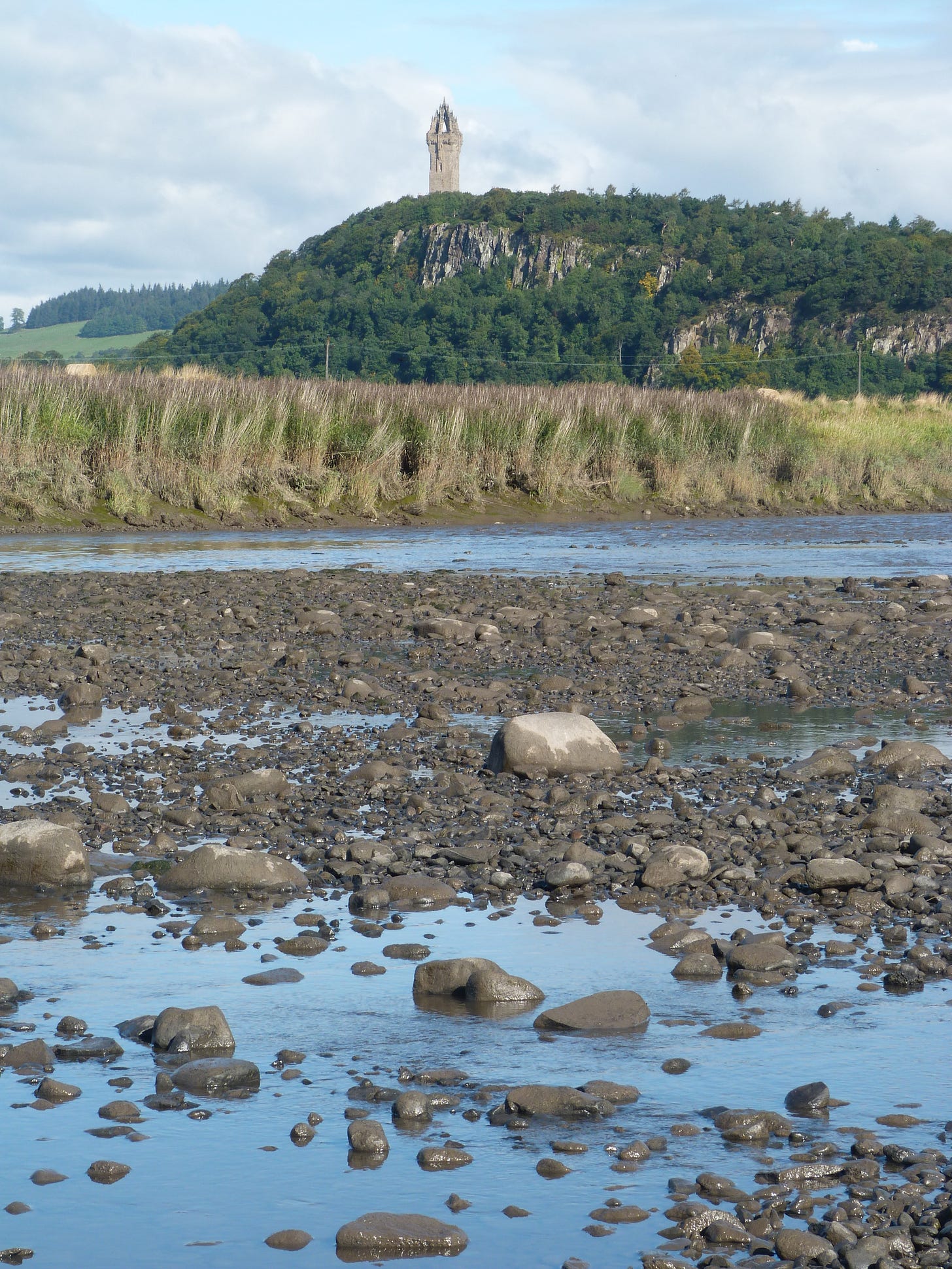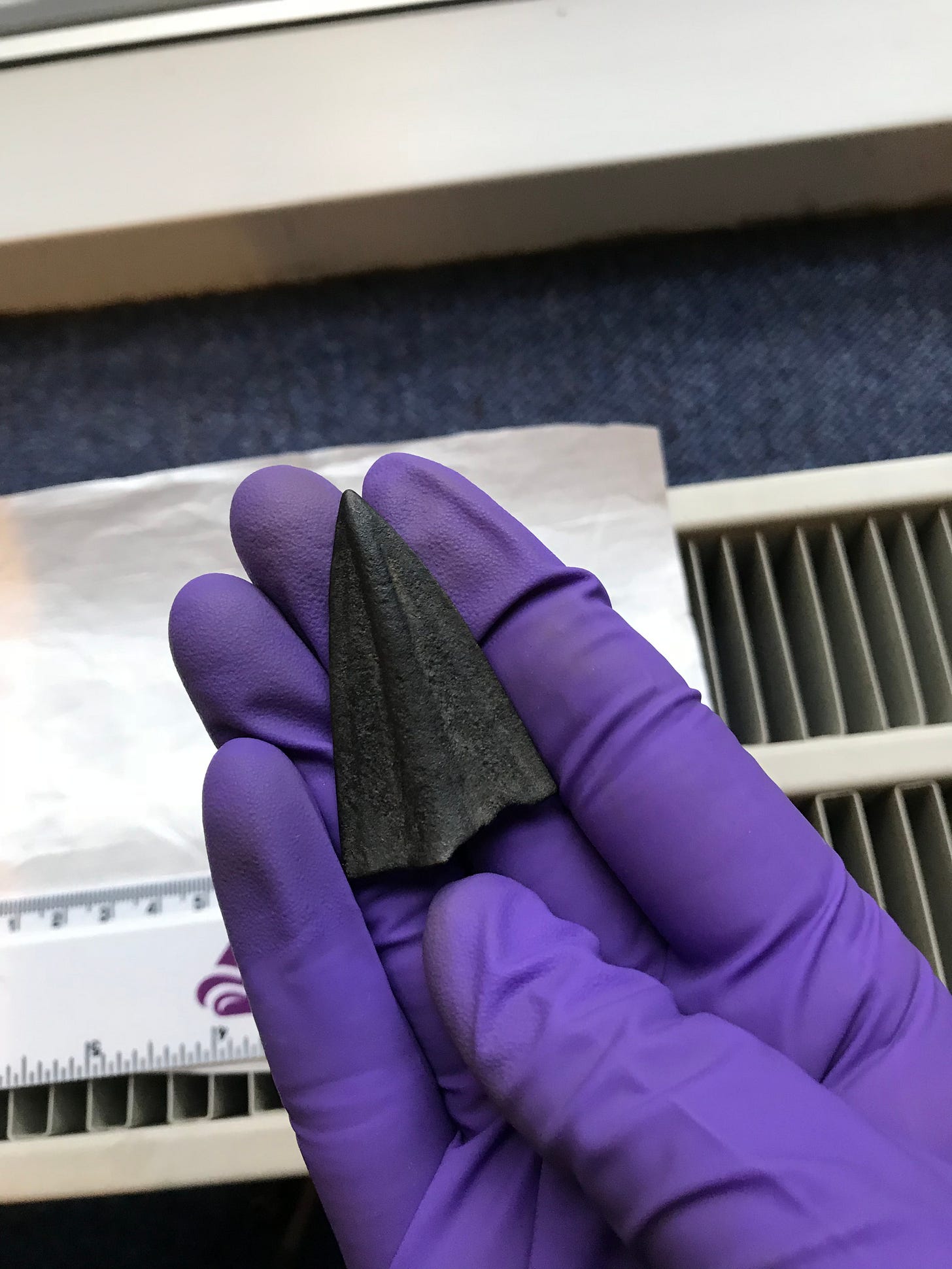A version of this article was previously published in the Stirling Observer.
So for most of Stirling’s residents we cross the Forth all the time without thinking about the tide or its cold muddy depths. But before the bridge these were vital important details. The most important ford on the Forth was the Abbey Ford.
The Abbey Ford at low tide.
In February 1727 the Council (or Burgh as it was) paid one William Henry Allan six pounds to measure the Abbey ford. Now this lies to the east of Cambuskenneth Abbey and was first used around 2500 BC. It comprises a 500m stretch of bedrock and gravel that is the only point of the Forth where it’s possible to cross dry shod at low tide. It’s been used by thousands of people including Romans and Celts, Kings and Queens and even the treacherous Earl of Atholl, on his murderous midnight raid on the abbey during the Battle of Bannockburn. This was where brave Sir William of Airth was guarding the Bruce’s baggage train and Athol massacred him and his men.
A 3000 year old broken spear tip from the ford.
The ford was probably the main reason David first gave the land to abbey in the 12th century and it was probably him that built the first Stirling Bridge, the one that was destroyed during the Battle of Stirling. However, by the 16th century the ford was becoming a nuisance as larger and larger ships were used and they struggled to get past the ford’s rocks, so periodically the burgh paid for people to clear the stones, for example in 1610 every house in the whole town was to send a man for a day to clear the ford and by 1777 there was a large 500 yard long channel cut through it. Despite all of this the ford is still there…..though please don’t try to use it the mud is thick and tide’s as treacherous as Atholl.





